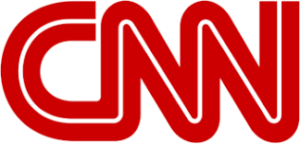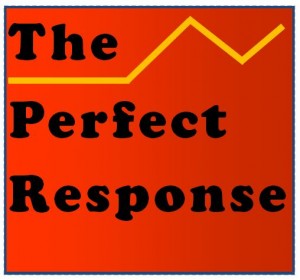“When I used to read fairy tales, I fancied that kind of thing never happened, and now here I am in the middle of one!” –Alice in Wonderland
Any thoughtful person looking at our peculiar times can’t help but wonder why the willful acceptance of misinformation is so pervasive. In an era when the ease of researching anything is easy, and credible news sources are just a click away, it is a puzzle to understand why so many are flying blind with their own preferred fantasies. Most of us know the common markers of self deception heard all around us: covid vaccines are very dangerous; “the government” is using them to take away our freedoms; progressives are Nazis or “communists;” there is a concerted “war on Christmas;” voter fraud is widespread; university teachers indoctrinate their students; and that was just a “party” in the Capitol on January 6, not an insurrection. These kinds of fictions keep surfacing. Nearly all of these claims are provably false, using accepted means for verifying facts and applying common tests of source credibility. How do people stay in their own bubble?
It’s Now Easy to Live in an Information Desert

An admittedly oversimplified but compelling explanation hints at part of the cause. In a nutshell, we no longer give sufficient time to comprehensive news sources that were common even fifteen years ago. Instead, we cherry-pick news about just a few stories, choosing sources more for conformation than information. A result is that we are poorly informed or unaware of what the best evidence shows in a given instance.
The reason this is so easily was made clear to me on a recent trip where, for days, my only source of news was television. None of the three hotels where I stayed had a newspaper available. And their WI-FI access was predictably spotty. Typically, even good television news shows cover only a few stories. Frequently, as with the collapse of the condominium on Collins Avenue in South Florida, one story dominates. Cable news especially has a hard time juggling a complex news agenda, even though they have capable reporters that are ready for calls from producers that often never come. A single story formula tagged as “breaking news” seems to be a ratings winner.
A good newspaper forces closed minds to open, at least a little.
This matters, because cable and internet news has largely replaced much more diverse city newspapers that still existed until a few years ago. Newspapers carried various stories from the AP, perhaps Reuters or and AFP, as well as the paper’s local reporters and other specialized news services. Even a middling city paper offered a daily window on the world. And a very good one, like the New York Times, forces closed minds to open. For example, on the day I started writing this, just the first page of the Times featured 18 different news items, including a photo story of an ICU staff trying out a new treatment to save a dying covid patient. The image of medical staff hovering over a patient suggested a valiant effort to find a medical off-ramp just short of death. True, readers still chose what they wanted to read. But its hard to miss conclusive and myth-busing headlines. What would that front-page picture say to an anti-vaxxer?
In addition, news consumers are not tied to the linear and and narrower stories of cable and broadcast news outlets. Video edits for the viewer, one story doled out at a time at the pathetic oral rate of about 200 words a minute. By contrast, print lets the reader decide from a much broader palette of stories. In addition, Americans were once better informed partly because news services and many newspapers had a financial interest in doing straight news. Commentary may work for the increasing tribal cable networks, but not for a news service like the Associated Press, which needs neutrality to satisfy its very different subscribers.
Misinformation by the Truckload
It’s now an old and sad story that news readership is on life support. Some papers have survived, but with far fewer reporters. Whether it is the Allentown Daily Call or the New York Daily News, staffs that remain now sit in a sea of empty desks. The rationale of the earnings-driven owners is that younger Americans aren’t newspaper readers, which is sadly true. But it is a mistake to assume that younger Americans have thrown in the towel on credible news stories. And yet the major internet giants like Google aren’t much help. They aren’t journalists, and they aren’t very good at aggregating stories for the collective good. Their selections are mostly governed by algorithms rather than solid reporting. In truth, neither CNN’s Jeff Zucker or Facebook’s Mark Zuckerberg would cut it in the journalistic worlds once occupied by Fred Friendly, David Halberstam, Janet Malcolm, David Carr or Ben Bradlee. These latter-day giants would have seen through the charade of one-note news, as well as the price it exacts from an increasingly distracted public.
![]()


 In 2016 CNN especially treated even minor Trump primary successes as deserving lavish coverage. Jeff Zuckerman’s network at times simply turned over their air to garish displays of stunning excess: jaw-dropping expressions of self-regard combined with pitches for Trump Steaks and Wine. I remember commenting to my wife after one of these lavish shows that I hoped there where a few fist fights in the New York control room. At least some producers should have been furious with their network’s apparent inability to cut away to cover anything else.
In 2016 CNN especially treated even minor Trump primary successes as deserving lavish coverage. Jeff Zuckerman’s network at times simply turned over their air to garish displays of stunning excess: jaw-dropping expressions of self-regard combined with pitches for Trump Steaks and Wine. I remember commenting to my wife after one of these lavish shows that I hoped there where a few fist fights in the New York control room. At least some producers should have been furious with their network’s apparent inability to cut away to cover anything else.